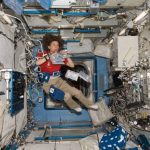 Last year I wrote about an interesting wearable technology developed by a startup called SmartSite. The company, which is part of the Y Combinator stable, offers hardware that is connected to the cloud to help companies measure what hazardous substances employees are exposed to.
Last year I wrote about an interesting wearable technology developed by a startup called SmartSite. The company, which is part of the Y Combinator stable, offers hardware that is connected to the cloud to help companies measure what hazardous substances employees are exposed to.
Such exposure is common on building sites, and can lead to conditions such as cancer, dermatitis and a range of respiratory problems. To help reduce this, the SmartSite system monitors particulates in the air, UV rays, and even noise levels on site.
The concept, which emerged out of time spent at the Royal College of Arts, aims to improve on existing methods that tend to rely on past conditions to gauge the current risk to workers. More current monitoring is possible but usually expensive so is undertaken less often, and this is where SmartSite comes in.
Predictive wearables
Of course, they’re not the only company aiming to use wearable technology to provide early-warning to workers in hazardous environments. For instance, British startup Canaria provide a device designed to help astronauts avoid accidents.
The device monitors for carbon dioxide levels in the vicinity of the wearer, which is used to measure their fatigue levels. Whilst it’s primarily meant as a preventative tool, it also raises an alert if an accident were to occur.
The device itself is analogous to a hearing aid and uses a wireless charging system to operate around the clock. This allows for 24/7 data collection and transmission.
In addition to measuring carbon dioxide levels, the device also measures heart rate and sulpher dioxide levels. It’s hoped that it will have a number of use cases, not only in space but also down here on Earth. It recently won the Global NASA Space Apps Challenge in the ‘Best Use of Hardware’ category.
It’s a fascinating technology, and you can learn more about it via the video below.